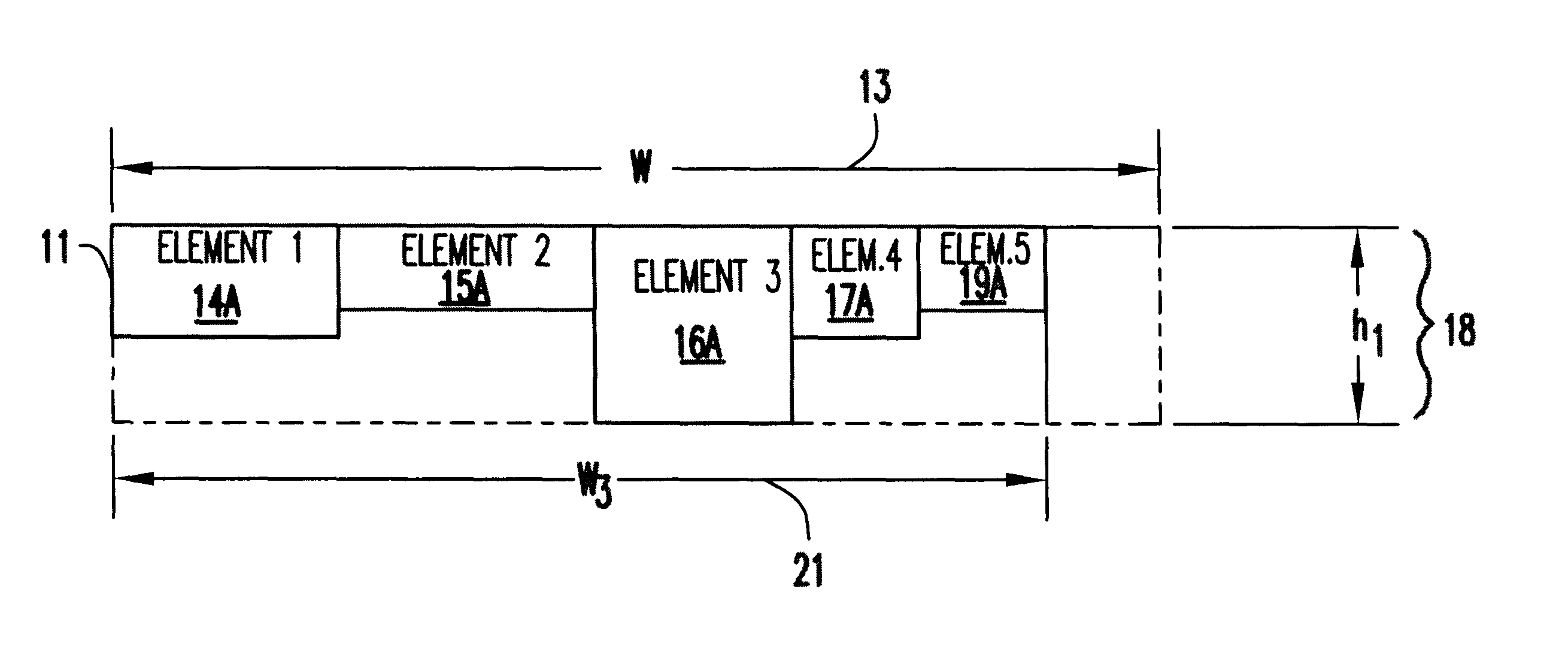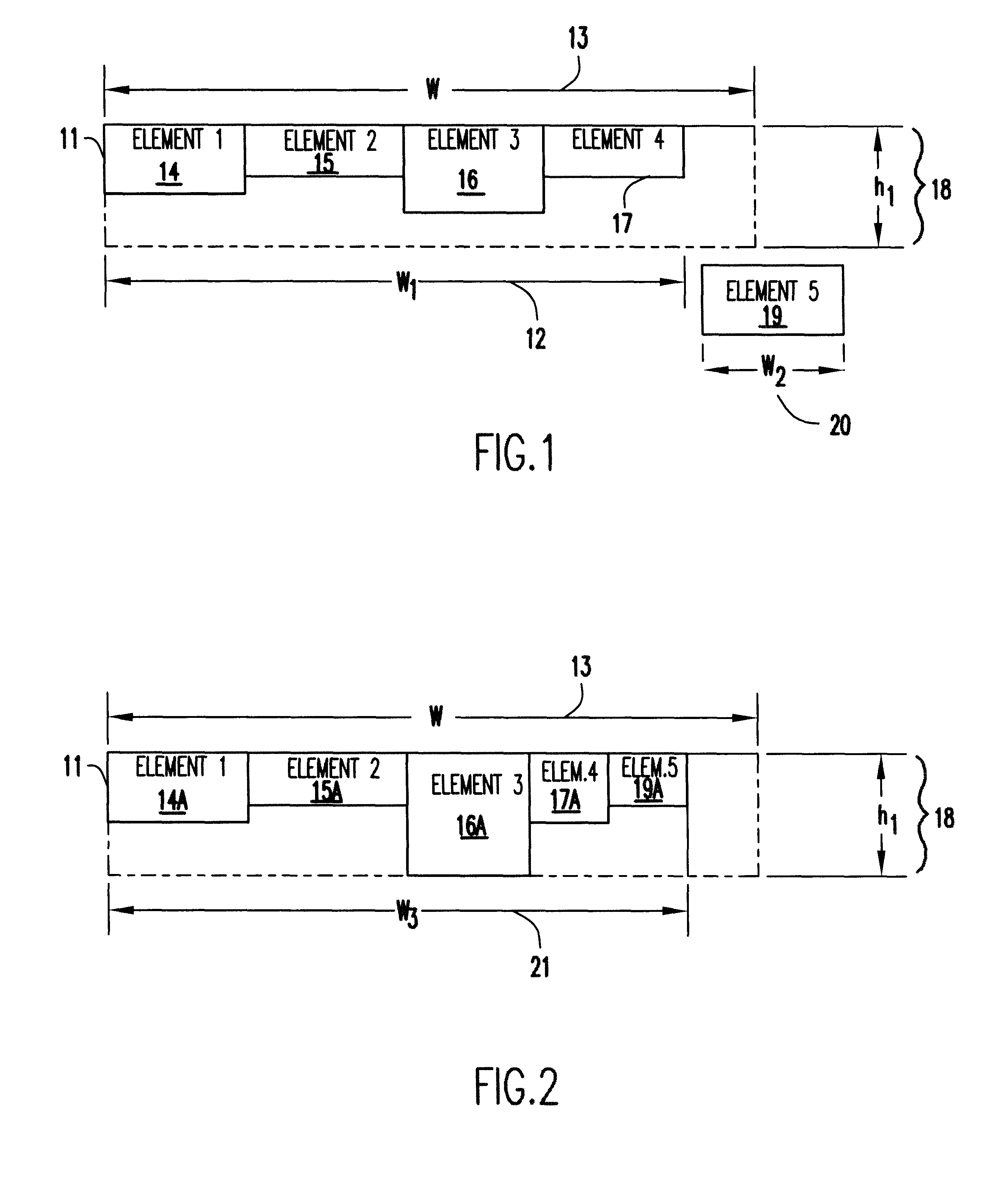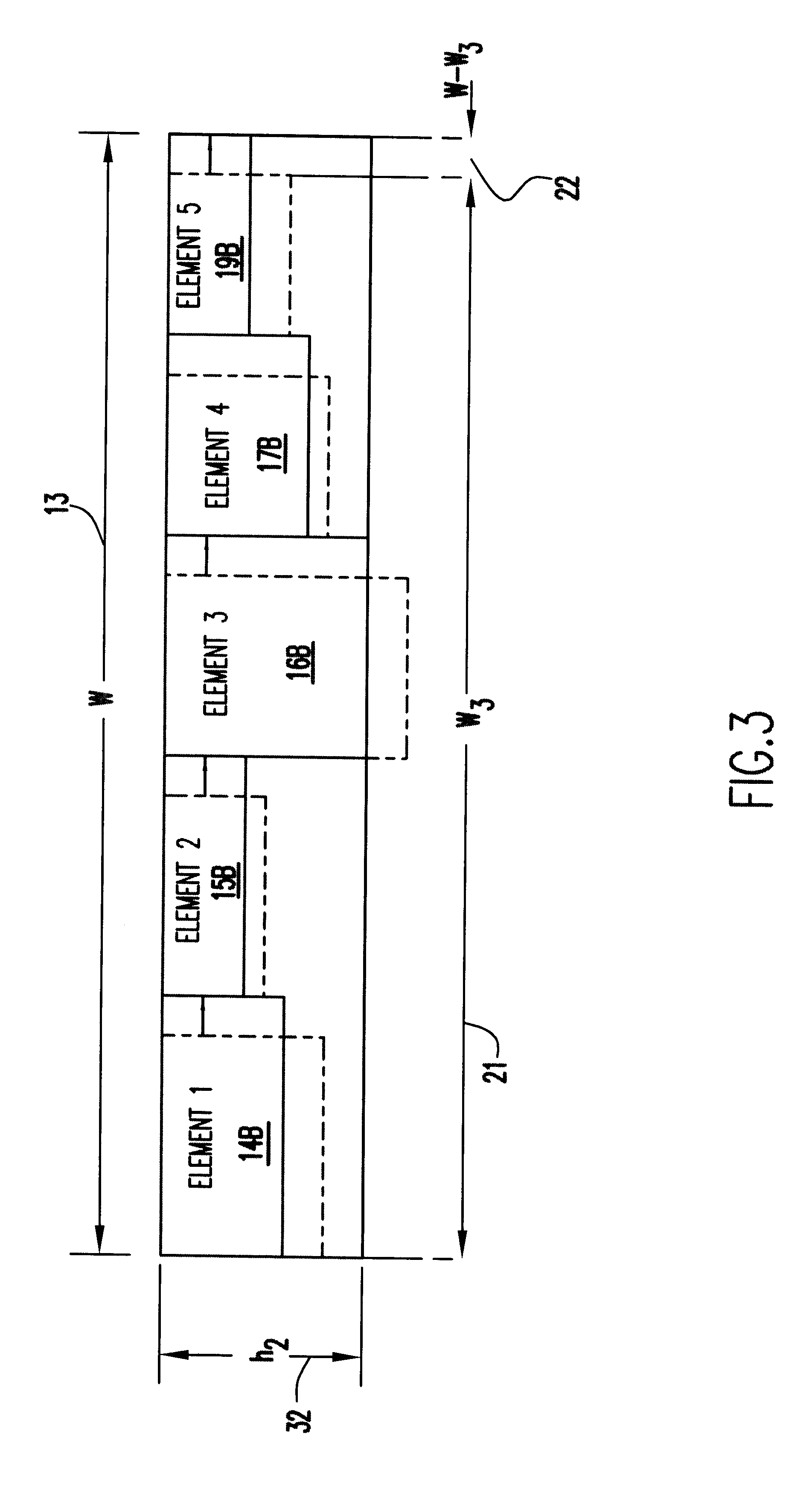Method for arranging display elements
a display element and display element technology, applied in the field of display element arrangement, can solve the problems of poor aesthetic impression, waste of screen space, and impaired interface understanding,
- Summary
- Abstract
- Description
- Claims
- Application Information
AI Technical Summary
Benefits of technology
Problems solved by technology
Method used
Image
Examples
Embodiment Construction
The layout manager of the present invention is implemented as a software application that interacts with other applications that require elements to be displayed on a display device. It is a sub-module of a display manager as may be found in the state of the art. The display manager and improved layout manager are implemented using object oriented techniques such that each display element is implemented as an instantiation of the element class, with size queries implemented as functions, or object methods. When an active application requires an update of the display, the layout manager interacts with the active application to retrieve display information in the form of display elements.
The first step of the general method is an attempt to pack elements into a row given available width. Some elements may be taller than others. The height of the shorter elements is extended if they will become narrower when they become taller. In this way, as many components as possible will be placed...
PUM
 Login to View More
Login to View More Abstract
Description
Claims
Application Information
 Login to View More
Login to View More - R&D
- Intellectual Property
- Life Sciences
- Materials
- Tech Scout
- Unparalleled Data Quality
- Higher Quality Content
- 60% Fewer Hallucinations
Browse by: Latest US Patents, China's latest patents, Technical Efficacy Thesaurus, Application Domain, Technology Topic, Popular Technical Reports.
© 2025 PatSnap. All rights reserved.Legal|Privacy policy|Modern Slavery Act Transparency Statement|Sitemap|About US| Contact US: help@patsnap.com



